Introduction to Behavior Charts in ABA Therapy
Behavior charts are a pivotal aspect of Applied Behavior Analysis (ABA) therapy, a treatment methodology highly regarded for improving socially significant behaviors, particularly in individuals with autism. These charts serve as valuable tools, facilitating the tracking of behavioral progress, enhancing motivation through structured feedback, and supporting data-driven decision-making. Across therapeutic settings, behavior charts work in tandem with visual data representation, individual assessments, and collaborative approaches to empower individuals and drive positive behavior change. This article will delve into the multifaceted role of behavior charts within ABA therapy, examining their purpose, applications, and effectiveness.
Purpose and Functionality of Behavior Charts in ABA Therapy
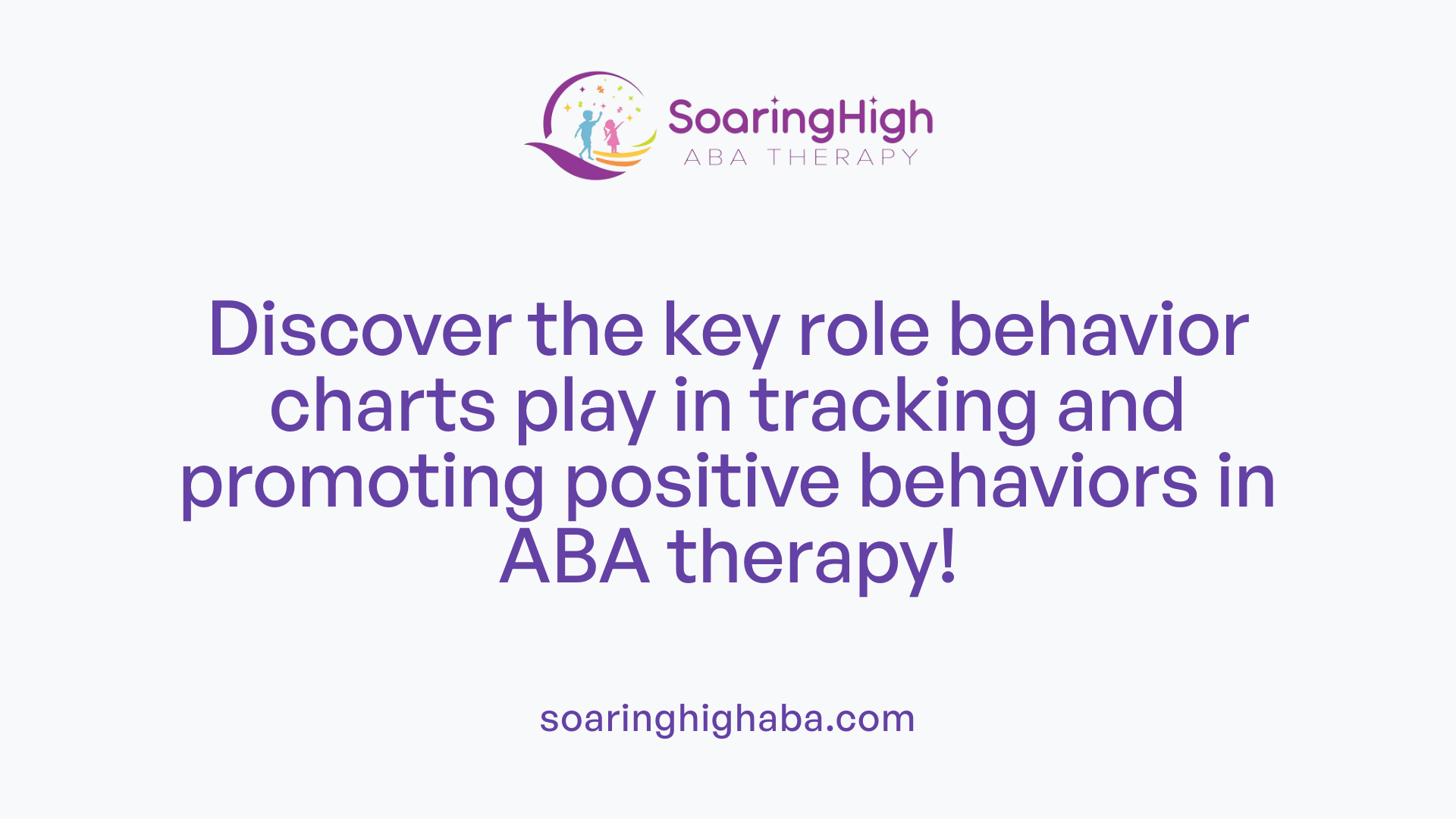
What is the purpose of a behavior chart in ABA therapy?
The purpose of a behavior chart in ABA therapy is to provide a visual tool that helps children track and manage their behavior effectively. Behavior charts facilitate adherence to specific guidelines and routines, which is crucial for promoting positive behavior changes.
These charts offer immediate feedback, motivation, and clear expectations for children, enhancing their learning experiences. Formats such as sticker charts and color-coded systems are popular choices, each designed to meet various behavioral management needs.
To maximize effectiveness, behavior charts should be tailored to the individual child's requirements. Consistent usage and pairing with positive reinforcement strategies are essential in encouraging desired behaviors. This ensures that children gain a sense of achievement each time they meet their goals, reinforcing their learning process.
By actively tracking behaviors and providing rewards, behavior charts help foster self-monitoring skills. Such skills are vital for children as they learn to establish appropriate behavioral patterns over time—ultimately leading to improved outcomes in their daily lives.
Immediate feedback and motivation
Behavior charts deliver instant feedback, allowing children to see the immediate consequences of their actions. This timely response can reinforce good behavior and motivate them to continue making positive choices.
Self-monitoring and behavior management
Engaging with a behavior chart enables children to develop self-monitoring skills. They learn to keep track of their own behaviors, enhancing their sense of responsibility and promoting better behavior management in various settings.
Supporting Children with Autism: Tailoring Behavior Charts
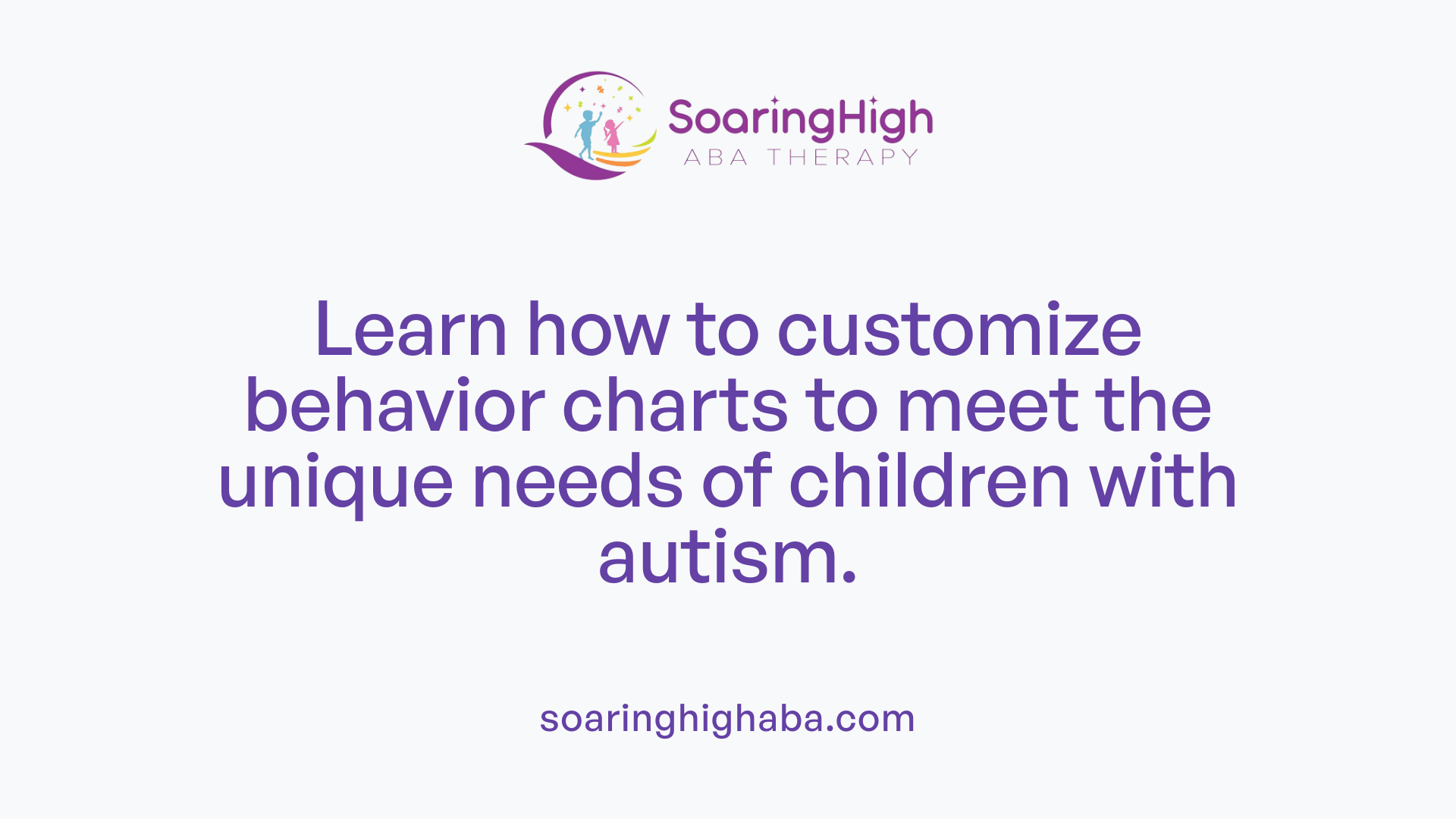
How do behavior charts work for children with autism?
Behavior charts can be effective tools for children with autism by helping them track and manage their behaviors. These charts promote desirable actions such as making eye contact while minimizing disruptions like shouting or hand flapping. Each chart is tailored to meet the individual needs and age of the child, which is crucial for effectiveness.
Customization for sensory issues
When utilizing behavior charts, it's important to consider any sensory issues that may distract the child. The design of the charts can include visual cues or symbols that resonate with the child’s interests, making them more engaging. Clear and specific target behaviors should be defined, ensuring children understand what is expected of them. Also, it’s beneficial to involve the child in discussing incentives for achieving behavior goals, which can lead to greater ownership of their progress.
Combining with positive behavior support
To enhance the effectiveness of behavior charts, pairing them with positive behavior support strategies is recommended. This can include individualized behavior plans that are based on Functional Behavior Assessments (FBAs), which help identify the reasons behind challenging behaviors. By amalgamating these approaches, therapists and caregivers can create a supportive learning environment that not only rewards positive actions but also addresses the underlying reasons behind behaviors, encouraging lasting change.
Graphical Analysis in ABA Therapy: A Crucial Component
Why are graphs important in Applied Behavior Analysis?
Graphs play a vital role in Applied Behavior Analysis (ABA), primarily by providing a visual representation of behavioral data over time. They are essential for evaluating the effectiveness of treatment plans. By using these visual analyses, professionals can identify trends, levels, and variability in behaviors, which is crucial for making timely adjustments to interventions.
Data representation through graphs
The most common type of graph in ABA is the line graph, which demonstrates how specific behaviors change over time. These graphs serve not just as tools for internal assessment, but they are also critical in communicating progress to external stakeholders, such as parents and insurance payors. Often, insurance companies require these visual reports to authorize continued treatment, thereby making accurate graphing fundamental to the billing process.
Importance in evaluating treatment
For effective treatment evaluation, critical components of graphs include variability, level, slope, and trends. These elements help professionals assess the characteristics of data distribution. Furthermore, the integration of electronic data collection and graphing software enhances the precision of data representation, which minimizes errors and boosts the efficiency of visual analysis.
Use in communication and billing
Graphs not only facilitate effective communication among therapists, parents, and insurance companies but also support data-driven decision-making in intervention strategies. They encapsulate crucial behavioral insights, guiding adjustments in treatment plans while enhancing the overall quality of care for clients. Their role in tracking progress ensures that every stakeholder can grasp the child's advancements or challenges during therapy.
Understanding Different Types of Graphs in ABA
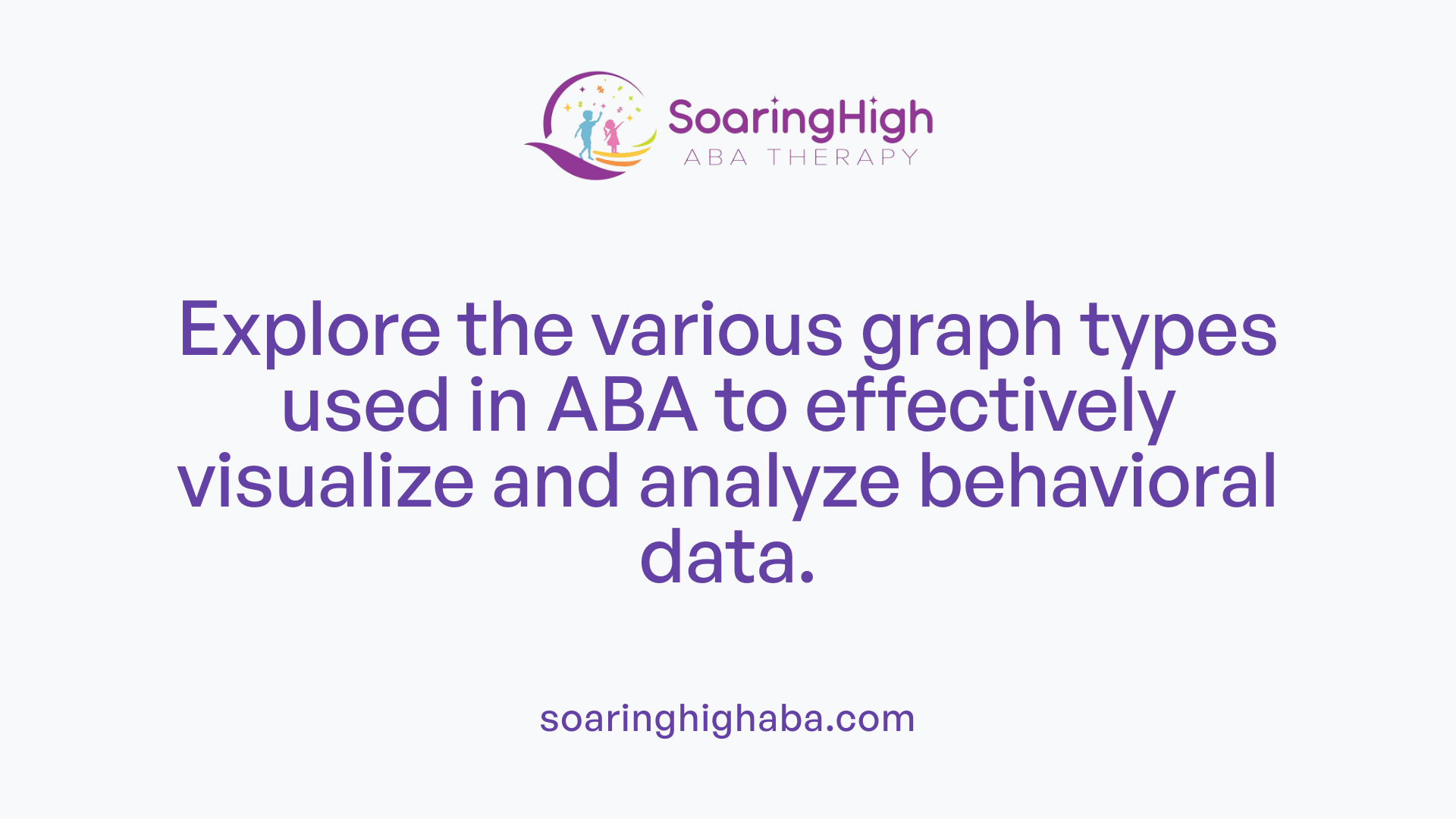
What are the different types of graphs used in ABA?
ABA professionals utilize various types of graphs to track behavior and evaluate treatment effectiveness. The main categories include:
Equal Interval Graphs: These graphs represent consistent intervals along the x-axis, making it easy to visualize progress over time. The most common equal interval graph in ABA is the line graph, known for effectively illustrating trends in behavior.
Bar Graphs: Another type of equal interval graph that displays data in vertical or horizontal bars, allowing quick comparisons across different behaviors or settings.
Non-Equal Interval Graphs: These graphs, like cumulative records and scatterplots, do not follow a uniform time scale. Cumulative records show total responses over time, helping to visualize skill acquisition.
Scatterplots: They are particularly useful for identifying relationships between various behavioral measures, highlighting correlations that may inform therapeutic adjustments.
Additional Graph Insights
The choice between these graph types can significantly impact data analysis. Here are key features of each:
| Graph Type | Description | Best Use |
|---|---|---|
| Line Graph | Shows behavior trends over time with equal intervals | Tracking progress and trends |
| Bar Graph | Compares different behaviors visually | Evaluating therapy effectiveness across multiple areas |
| Cumulative Record | Displays total responses over time | Visualizing skill acquisition |
| Scatterplot | Identifies relationships between behaviors | Analyzing correlations for targeted interventions |
Overall, these graphs simplify data interpretation and assist ABA professionals in making informed decisions about interventions.
The Role of Behavior Charts in Evidence-Based Practices
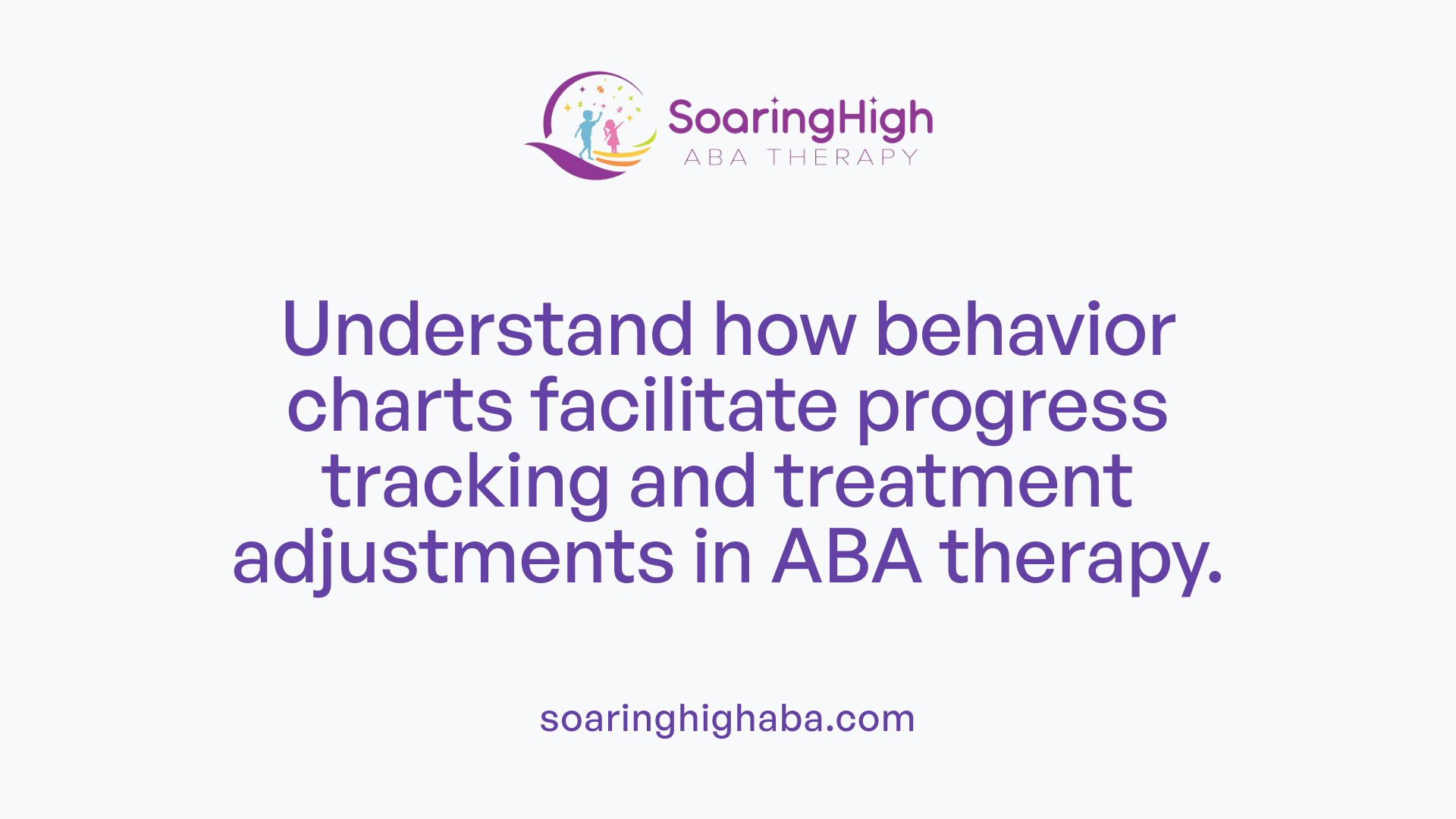
Behavioral tracking and progress monitoring
Behavior charts are integral to Applied Behavior Analysis (ABA) therapy, serving as a structured method for documenting and tracking a child’s behavior over time. These charts not only outline target behaviors but also provide clear success criteria and consequences for meeting or not meeting these expectations. By utilizing behavior charts, therapists can effectively visualize progress, which is essential for making informed decisions about treatment adjustments.
Tailoring treatment plans
In ABA therapy, individualized treatment plans are crucial, and behavior charts play a significant role in this customization. They allow therapists to collect and analyze data regarding specific behaviors—highlighting both improvements and challenges. This data-driven approach helps clinicians tailor interventions based on the unique strengths and difficulties of each child, ensuring that the therapy aligns closely with the child's needs.
Ongoing assessment and adjustment
Continual assessment is a fundamental aspect of effective ABA therapy. Behavior charts facilitate this ongoing evaluation by presenting data that reflects changes in behavior patterns. This continuous feedback loop enables therapists to make dynamic adjustments to the therapy plans. Regularly reviewing the data aids in understanding trends and variations, allowing for timely modifications to interventions that can enhance the child's overall developmental progress.
Using the ABC Behavior Chart for Effective Interventions
What is the ABC behavior chart and its purpose?
The Antecedent-Behavior-Consequence (ABC) chart is a valuable tool used in Applied Behavior Analysis (ABA) to identify the triggers and reinforcers of behaviors. This chart details three critical components:
- Antecedents: Events or situations that occur before a behavior.
- Behaviors: The actions or responses that occur in reaction to the antecedents.
- Consequences: The outcomes or responses that follow the behavior, which can reinforce it.
By systematically documenting these elements, therapists can gain insights into behavioral patterns, crucial for developing effective management plans tailored to individual needs.
Identifying triggers and consequences
Using the ABC method, professionals can spot specific triggers that lead to challenging behaviors. For example, if a child exhibits disruptive behavior during group activities, the antecedent may be peer interactions or task demands. Understanding these triggers helps in designing strategies to mitigate them.
Correspondingly, analyzing the consequences helps identify what reinforces behavior. Positive reinforcement may include gaining attention, while negative consequences may involve escape from uncomfortable tasks. Recognizing these elements is vital as it guides the development of interventions that directly address the underlying reasons for a child's behavior.
Developing behavior management plans
The insights gathered from the ABC chart facilitate the creation of tailored behavior management plans. These plans are structured around preventing challenging behaviors through:
- Skill-building: Teaching alternative behaviors or coping strategies that can replace undesired actions.
- Environmental adjustments: Modifying the learner's surroundings to minimize triggers.
- Reinforcement techniques: Employing positive reinforcement that aligns with the learner’s preferences, fostering intrinsic motivation.
By integrating the findings from the ABC chart, caregivers and therapists can ensure a comprehensive strategy that not only addresses immediate behavior but also supports long-term skill development and emotional well-being.
Challenges and Criticisms of Behavior Charts
Potential Negative Impacts
Behavior charts, while commonly used in ABA therapy, can sometimes generate anxiety or shame among children. This emotional distress may lead to increased stress behaviors, counteracting the intended positive effects of the reinforcement strategy. Many experts caution that these charts risk damaging the child's self-esteem by framing behaviors solely as choices, rather than understanding the underlying skill deficits that may exist.
Maintaining Intrinsic Motivation
Another significant concern is that reliance on external rewards, as seen in behavior charts, can undermine a child's intrinsic motivation. When children are consistently rewarded for adhering to expected behaviors, they might become dependent on these rewards. This dependency can lead to challenges in fostering genuine interest and self-motivation in positive behaviors over time.
Skills Development Versus Punishment
Critics argue that focusing on punitive measures for undesired behavior is not effective. Instead of merely addressing the behavior itself, it is crucial to identify and develop the skills needed to manage or replace those behaviors. Empowering children with the tools to understand and navigate their actions leads to better long-term outcomes than simple behavioral modification strategies.
Best Practices for Implementing Behavior Charts
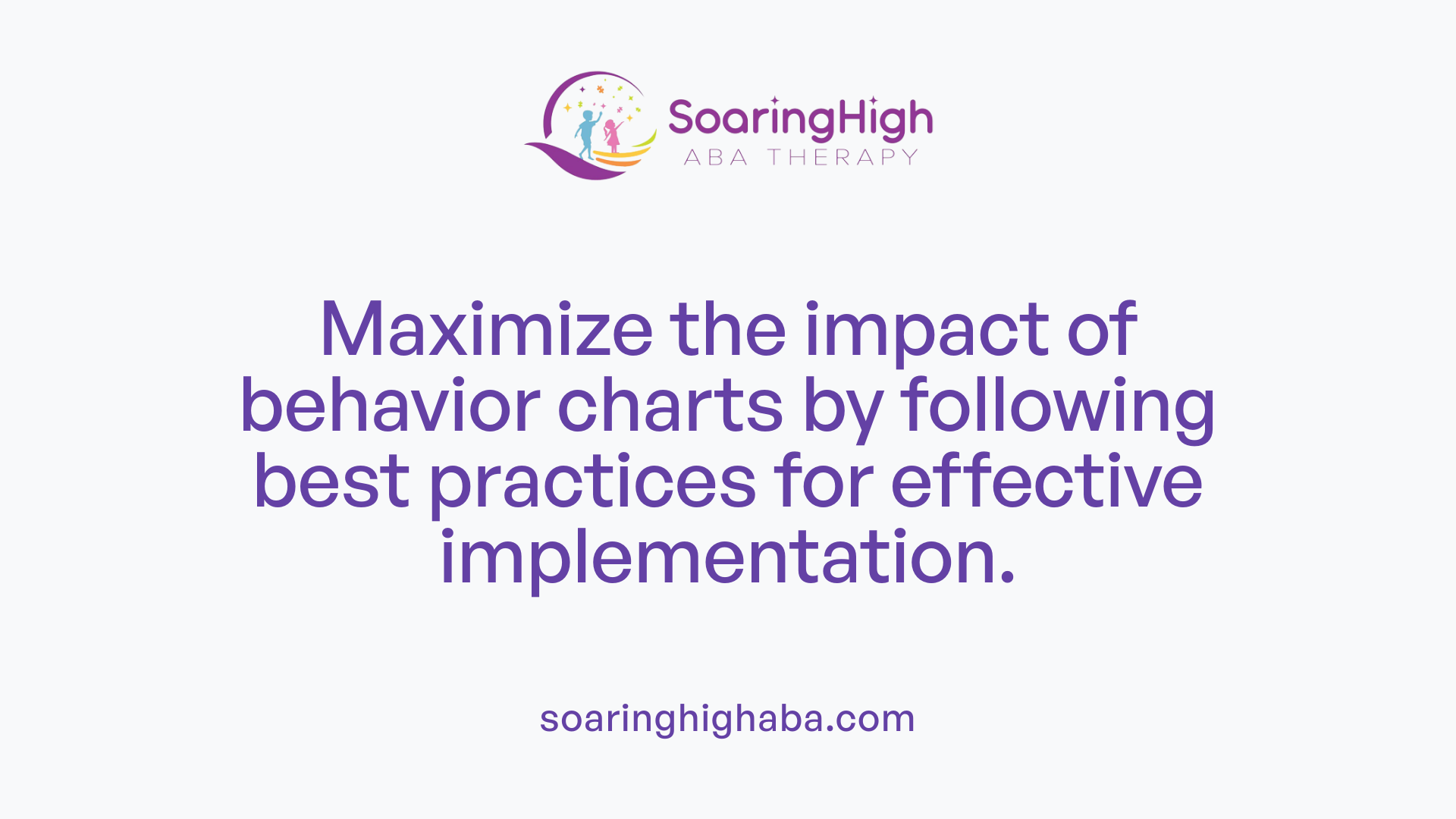
Enabling Positive Behavior Change
Behavior charts are valuable tools in ABA therapy for promoting positive behavior change among individuals with autism. To maximize their effectiveness, caregivers should focus on incorporating positive reinforcement. This means using affirmative language—such as, "Brush your teeth" instead of negative commands. Rewarding appropriate actions cultivates an environment that encourages the repetition of desirable behaviors.
Behavior charts should also be utilized thoughtfully, balancing the outcomes with attentiveness to the child’s emotional response. Acknowledge both qualitative improvements, such as increased social skills, alongside quantitative measures.
Consistency, Patience, and Adaptation
Implementing a behavior chart demands consistency; caregivers must apply rewards uniformly according to set criteria. This routine helps create clarity and understanding for the learner.
Patience is equally essential, as behavior change often takes time. Caregivers should be prepared for an adjustment period and understand that progress may show incremental rather than immediate results. Lastly, adaptability in the approach is crucial; therapists and caregivers should be willing to modify the chart or strategy based on the individual needs and ongoing assessments of the child engaged in ABA therapy.
ABA Therapy: A Collaborative Approach for Positive Outcomes
Collaboration with caregivers and stakeholders
In Applied Behavior Analysis (ABA) therapy, collaboration is vital. Engaging caregivers and stakeholders cultivates a supportive network around the child. This teamwork allows everyone involved—parents, therapists, and educators—to share insights and reinforce strategies, fostering a consistent learning environment for the child.
Regular communication helps pinpoint progress and challenges. Caregivers gather essential behavioral data at home, documenting the child’s actions in real-world situations. This information informs therapists, making interventions more tailored and effective.
Building a supportive learning environment
Creating a positive learning space is essential in ABA. This environment should encourage growth and learning while reducing barriers to success. An effective support system involves clear expectations and consistency in reinforcement strategies, helping children navigate new skills.
Furthermore, by involving parents in goal-setting and therapy practices, the objectives become clearer and more achievable. Parents and caregivers can promote the generalization of skills learned during therapy by reinforcing them at home or in school settings. Through collaboration and support, ABA therapy can lead to meaningful behavior change, enhancing the child's overall development.
Conclusion: Harnessing Behavior Charts for Progressive ABA Outcomes
In conclusion, behavior charts stand as a fundamental component in the landscape of ABA therapy, offering a strategic means to nurture positive behavioral changes and track progress comprehensively. By providing visual feedback and fostering collaboration across caregivers and professionals, these charts enhance the overall therapeutic experience for individuals with developmental disorders. Yet, while behavior charts hold great promise, they must be employed thoughtfully and in conjunction with a well-rounded understanding of behavioral dynamics to avoid any potential drawbacks. With continuous evaluation and adaptation of these tools, ABA therapy remains a powerful avenue for individuals to achieve meaningful developmental outcomes.
References
- ABA Graphs & Visual Analysis: Types, Examples & Template
- Maximizing Progress: Inside an ABA Therapy Session for Autism
- A Parent's Guide To Understanding ABA Progress Graphs
- Measuring Progress: Tracking Developmental Milestones with ABA ...
- Applied Behavior Analysis (ABA) | Autism Speaks
- How Behavior Charts Promote Positive Change in Autism
- Functions of Behavior in ABA: Complete Guide
- Behaviors Charts: Helpful Strategy or Harmful Practice?




































































































